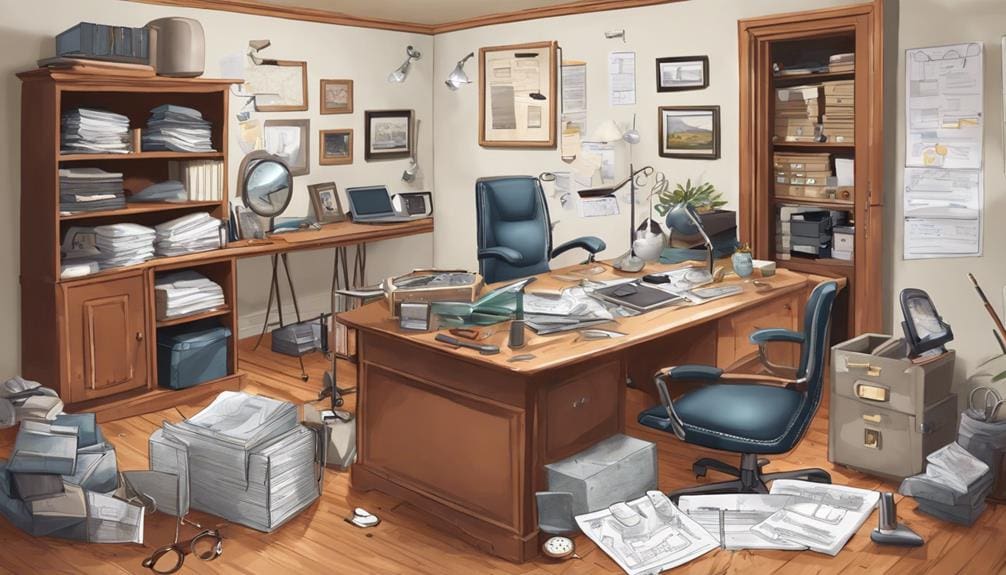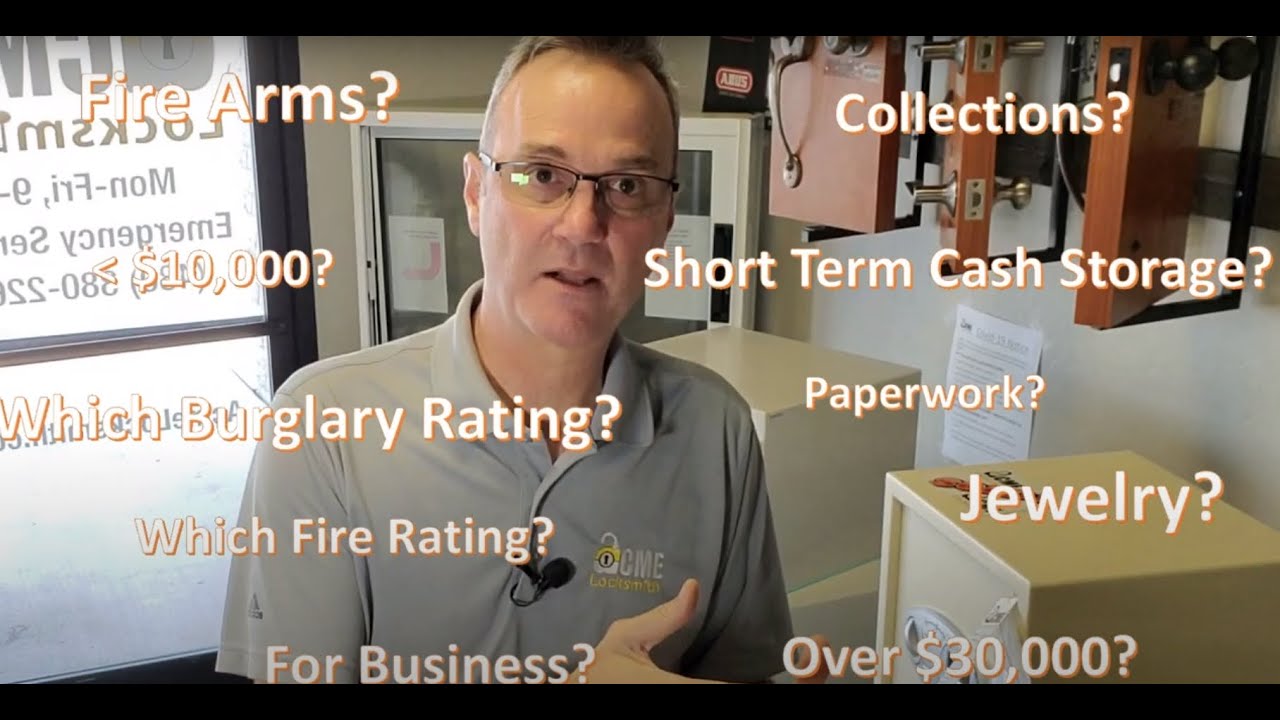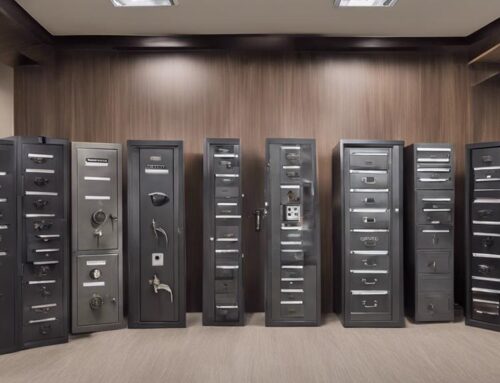When purchasing a home safe, start by examining security features like heavy gauge steel, composite construction, and advanced locking mechanisms. Choose a safe size that accommodates your current and future needs. Evaluate fire resistance by ensuring a minimum one-hour fire rating; look for UL-rated models. Consider water resistance with proper seals to protect against leaks and floods. Analyze locking mechanisms, opting for biometric, electronic, or combination locks. Balance budget with security requirements, factoring in additional features and installation fees. Secure professional installation for ideal anchoring and placement. By considering these all-encompassing tips, you’ll select the best safe for your needs.
Key Takeaways
- Evaluate fire and water resistance ratings to ensure protection against environmental hazards.
- Determine the appropriate safe size to accommodate current and future valuables.
- Opt for a safe with advanced locking mechanisms, such as biometric scanners or electronic keypads.
- Consider the quality of construction, including heavy gauge steel and solid plate steel doors.
- Balance your budget with the level of security features and professional installation services required.
Assess Security Features
When evaluating security features for a home safe, you’ll want to prioritize models built with heavy gauge steel and solid plate steel doors to maximize protection against burglary. These materials are vital for creating high-security safes that resist forced entry. The heavy gauge steel provides sturdy structural integrity, while solid plate steel doors offer an additional layer of defense against drilling and prying attacks.
Composite safes are an excellent choice if you need a balanced solution that combines burglary protection with fire resistance. These safes incorporate multiple layers of materials to withstand both high temperatures and physical attacks. This dual protection is particularly advantageous for safeguarding your valuables from diverse threats.
Consider floor safes, which offer the advantage of concealment and additional fire protection. Floor safes can be anchored into concrete, making them incredibly challenging to remove. However, it’s important to verify they offer adequate fire resistance to maintain the integrity of your stored items in case of a fire.
Ultimately, select a safe that can accommodate the growing value of your possessions over time. High-security safes with advanced security features guarantee that your valuable items remain protected, providing peace of mind and long-term security.
Determine Safe Size
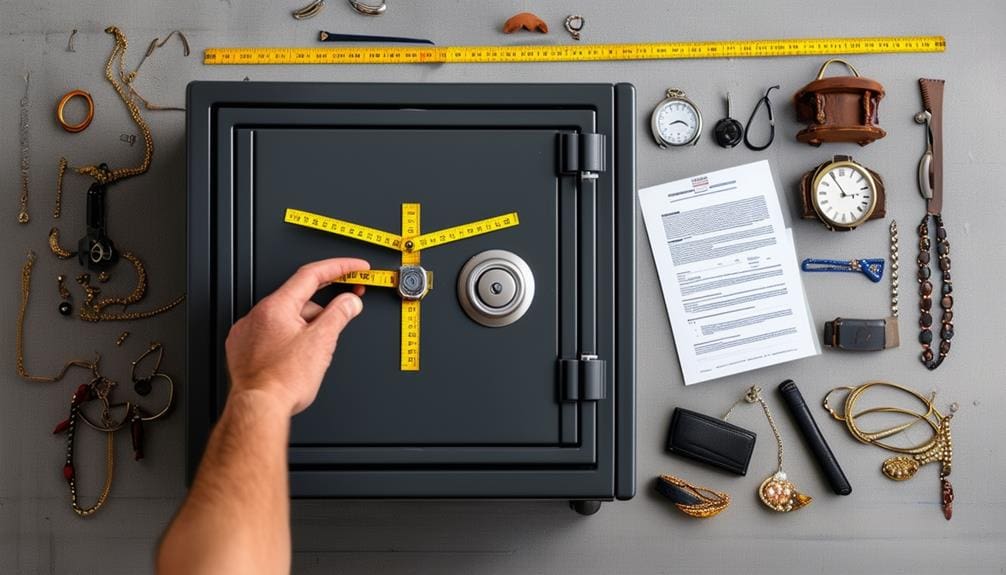
To determine the appropriate safe size, calculate the internal dimensions based on your current valuables, ensuring there’s sufficient space. Opting for a larger safe can future-proof your investment, accommodating increased content value over time. This approach prevents quickly outgrowing your storage capacity and provides versatile storage solutions for evolving needs.
Calculate Storage Needs
Calculating your storage needs is vital to guarantee the safe you choose can securely and adequately house all your valuables. Start by determining the internal safe size based on the items you plan to store. This includes considering important aspects like fire protection to secure your valuables are well-protected.
When evaluating storage space, it’s wise to opt for a larger safe. This foresight helps accommodate future storage needs and prevents the need to purchase a new safe as your collection grows. Larger safes provide versatile storage options, allowing you to securely hold a variety of items.
It’s important to analyze the dimensions of the safe to confirm it can store all your important items without overcrowding. Here’s a breakdown of key considerations:
| Consideration | Key Points |
|---|---|
| Internal Safe Size | Measure items to ensure they fit. |
| Future Storage Needs | Choose a larger safe for potential growth. |
| Dimensions | Confirm the safe fits in your designated space. |
Future-Proof Your Choice
As you evaluate your storage needs, it’s wise to contemplate a bigger safe to accommodate the expanding value and quantity of your future possessions. When determining the best safe size, consider future-proofing your choice to guarantee extended storage solutions. Opting for larger safes provides the flexibility needed to store various items, from important documents to valuable jewelry, without worrying about running out of sufficient space.
Investing in a bigger safe upfront can save you the hassle of frequent upgrades and the associated costs. Here are some key considerations to help you make an informed decision:
- Versatile storage options: Accommodate a wide range of items, ensuring you don’t exceed the safe’s capacity quickly.
- Prevent exceeding capacity: Anticipate future acquisitions and ensure the safe remains adequate as your possessions increase.
- Sufficient space: Calculate internal dimensions based on both current and projected storage needs.
- Extended storage: A larger safe provides a sustainable solution, avoiding the need for replacements.
- Enhanced security: Larger safes often come with advanced security features to protect your expanding collection.
Evaluate Fire Resistance
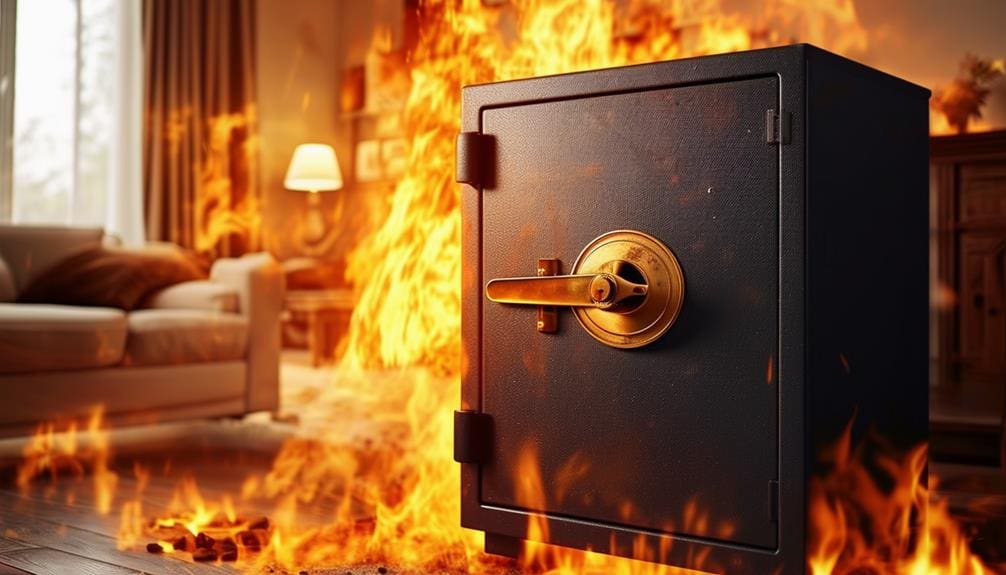
When assessing fire resistance in home safes, ensure the model has at least a 1-hour fire rating for optimal protection of your valuables. A fire rating is pivotal because it determines how long the safe can withstand extreme temperatures without compromising the contents. Fireproof safes with UL-rated fire protection offer dependable safeguarding against heat and smoke damage, ensuring your important documents remain intact.
Consider safes with longer fire ratings for heightened security. These models provide extended protection, which can be crucial during prolonged fires. To further enhance fire protection capabilities, supplement your primary fire safe with smaller lock boxes. These can house particularly sensitive items and offer an additional layer of security.
Anchoring safes, especially floor safes, into a concrete floor can also greatly strengthen their fire resistance. This step not only secures the safe in place but also reduces exposure to direct flames.
| Feature | Benefit |
|---|---|
| 1-hour fire rating | Basic fire protection for valuables |
| UL-rated fire protection | Reliable defense against heat and smoke |
| Anchoring safes | Enhanced stability and fire resistance |
Choosing the right fireproof safe with suitable fire protection capabilities is vital for safeguarding your valuables and important documents.
Consider Water Resistance
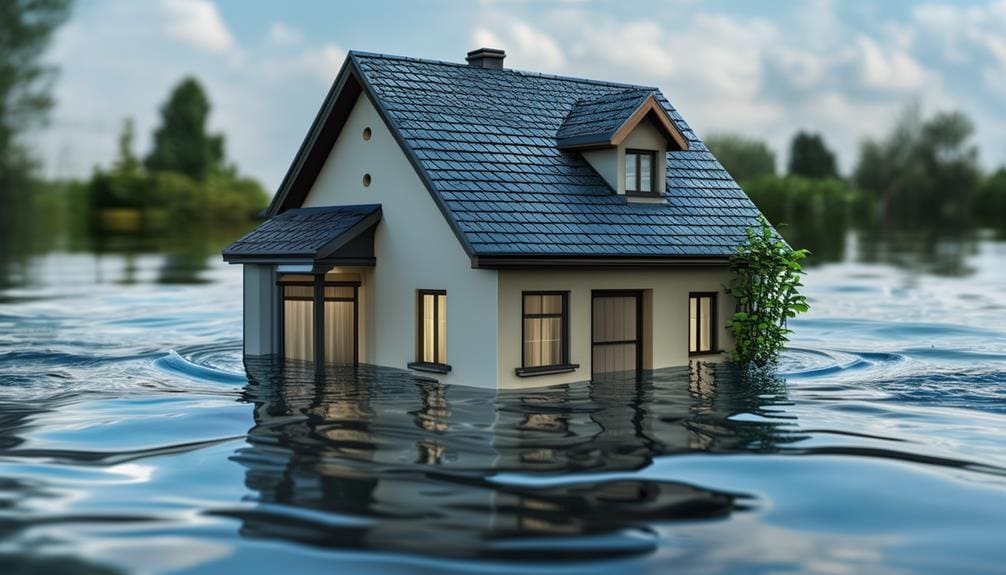
When selecting a safe, assess the likelihood of flooding or water damage in your area to determine if water resistance is necessary. Water-resistant safes offer essential defense against water infiltration, safeguarding irreplaceable items. Without this feature, even the most secure safes might fail to protect your valuables from water-related threats.
Flood-Prone Area Considerations
In flood-prone areas, it’s important to select a safe with strong water-resistant features to guarantee your valuables remain protected from potential water damage. Water-resistant safes are designed specifically to protect valuables from water damage, making them ideal for areas prone to natural disasters like floods. When evaluating safes in flood-prone areas, consider the level of water resistance needed based on the potential risk of flooding in your area.
To ensure thorough moisture protection, pay attention to the following water-resistant features:
- Seals and gaskets: Look for safes with high-quality seals and gaskets that prevent water from seeping in.
- Submersion rating: Check if the safe has a submersion rating, indicating how long and how deep it can be submerged without compromising its contents.
- Water-resistant certification: Guarantee the safe meets industry standards for water resistance, such as UL or ETL certifications.
- Material composition: Choose safes made from materials that inherently resist water penetration, such as certain types of composite or stainless steel.
- Design and construction: Opt for safes with reinforced doors and solid construction to enhance their ability to keep water out.
Protecting From Water Damage
Waterproof safes are essential for ensuring your valuables remain unscathed during floods or water leaks. When choosing a safe, it’s important to evaluate its water resistance rating. This rating will inform you about the safe’s ability to withstand various water-related incidents, providing an extra layer of protection. Water-resistant safes use seals and special coatings to prevent water infiltration, making them ideal for safeguarding documents, electronics, and other moisture-sensitive items.
To help you understand the importance of water resistance, consider the following factors:
| Factor | Description |
|---|---|
| Water Resistance Rating | Indicates the safe’s resilience against water exposure. |
| Seals and Coatings | Prevent water from seeping into the safe, protecting contents inside. |
| Moisture-Sensitive Items | Essential for items like documents and electronics that can easily get damaged. |
| Unexpected Water Exposure | Safeguards valuables during unforeseen events like leaks or floods. |
Analyze Locking Mechanisms
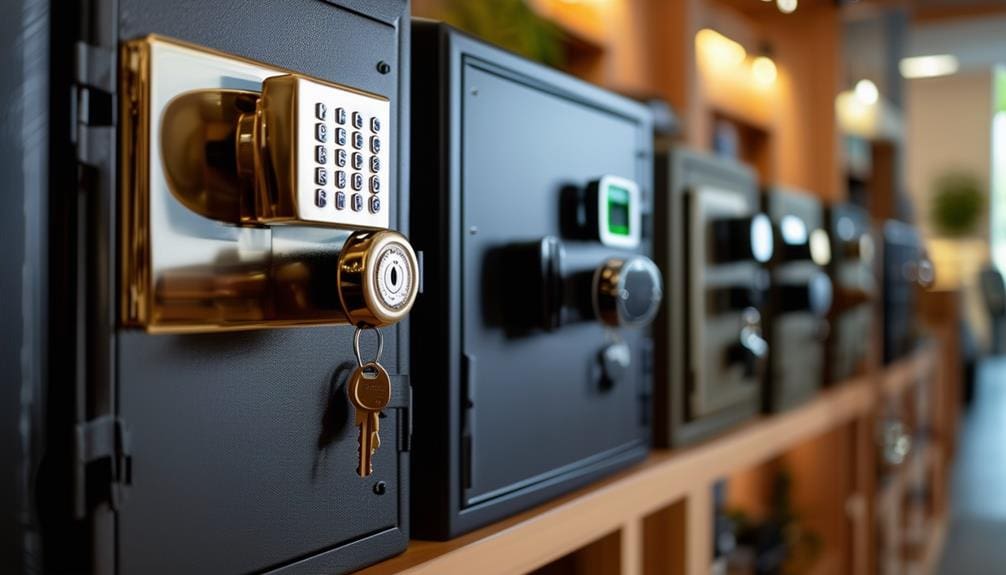
Evaluating the locking mechanisms of a home safe is necessary to ensuring your valuables are protected with the highest level of security. You’ll need to contemplate various options that offer advanced security features and reliable protection.
- Biometric scanners: These utilize fingerprint recognition technology, providing quick and secure access. They are ideal for those who need frequent access without the inconvenience of remembering codes or carrying keys.
- Electronic keypads: These provide PIN authentication, allowing you to set and change codes easily. They offer customizable access and are user-friendly.
- Combination locks: Known for their dependable security, these do not rely on electronics or batteries. They are simple, but can be slower to open.
- Backup key: Ensuring your safe has a backup key is essential. It acts as a fail-safe in case you forget your code or the electronic components fail.
- Advanced security features: Look for safes that integrate multiple locking mechanisms for added layers of protection.
Budget Considerations
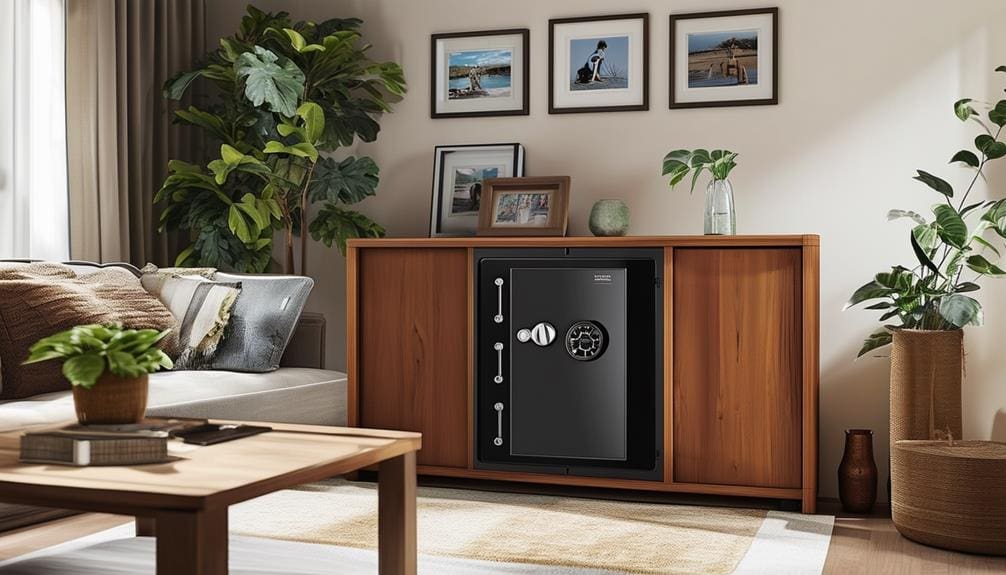
After evaluating the locking mechanisms, it’s crucial to take into account your budget to find a home safe that offers the best value for your security needs. Safes can vary significantly in price, from as low as $25 for basic fire chests to around $300 for more robust 1.2-1.3 cubic feet models. When setting your budget, consider not just the cost of the safe itself, but also any additional features or services that may be necessary, such as shipping fees if purchasing online.
Evaluate the value of the items you plan to store in the safe. For high-value items, investing in a higher-quality safe with advanced security features can provide better protection. Retailers like Home Depot and Lowes often offer sales or discounts, so keep an eye out for these opportunities to maximize your budget.
Additionally, consider the specific features that are essential for your needs. For instance, if fire protection is a priority, make sure the safe you choose is rated appropriately. By carefully balancing your budget with the security requirements of your valuable items, you can make an informed decision that offers the best value and protection for your home.
Choose Safe Placement
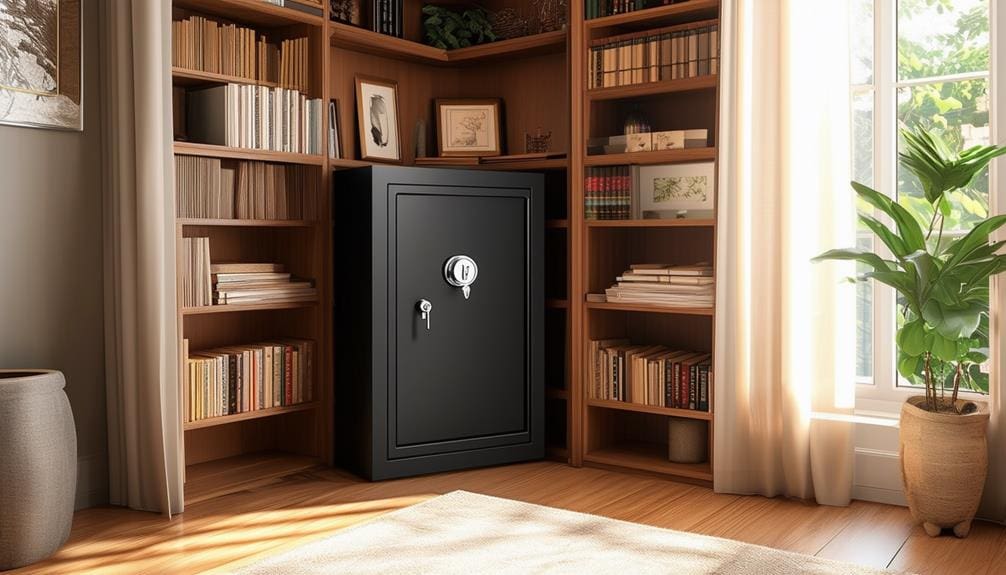
Strategically placing your home safe is essential for enhancing its security and minimizing the risk of unauthorized access. The correct safe placement can significantly deter potential intruders and protect your valuables effectively.
Consider the following factors to optimize your safe location:
- Wall safes: These can be discreetly hidden behind artwork or furniture, providing an additional layer of protection.
- Concealing: Position your safe in hard-to-reach places to make it less accessible to unauthorized access.
- False walls and fixtures: Installing your safe within false walls or behind fixtures can further deter intruders.
- Home ownership status: If you own your home, you have more flexibility in making structural modifications for better safe placement.
- Security needs: Assess your specific security requirements to choose a location that aligns with your level of risk tolerance.
Professional Installation Services
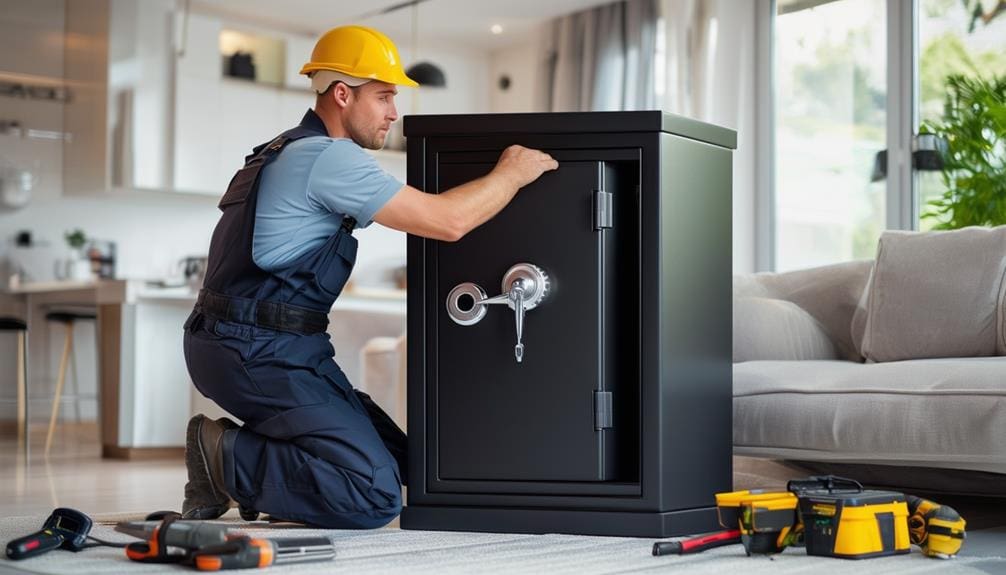
For securing your safe with maximum effectiveness and adherence to safety standards, professional installation services provide the expertise and precision necessary to guarantee it’s properly anchored. When you choose professional installation services, you make sure that your safe anchoring meets strict manufacturer guidelines. This includes the correct use of anchor bolts, which are essential for secure anchoring.
Professional installers have the knowledge to identify the best location for your safe and secure it firmly to prevent theft and unauthorized movement. By following manufacturer guidelines, these experts ensure that the safe is installed to the highest standards, providing added security for your valuables.
Anchor bolts, when correctly installed, create a strong connection between the safe and the floor or wall, significantly reducing the risk of the safe being tampered with or moved without proper authorization. Expert anchoring solutions provided by professionals make sure that every step of the installation process is meticulously carried out.
Choosing professional installation services not only enhances theft prevention but also offers peace of mind knowing your safe is anchored securely and effectively. Trusting experts for this vital task ensures your investment in a home safe delivers the highest level of protection.
Frequently Asked Questions
What Type of Safe Is Best for a Home?
For home use, a safe with a fireproof vs. waterproof feature, wall mountable design, biometric lock, digital combination, hidden installation, portable option, appropriate size considerations, bolt down feature, and shelf organization is ideal.
How Do I Choose a Security Safe?
To select a security safe, evaluate safe features, size considerations, lock options, fire protection, waterproof safes, installation process, security ratings, budget planning, and safe maintenance. Confirm it meets your security needs and fits your space.
How Much Should I Spend on a Home Safe?
Think of a home safe as a fortress for your valuables. Your safe budget should reflect desired home security, safe features, size, brand, installation, durability, warranty, and ratings. Aim to balance cost with essential protection qualities.
Is Buying a Safe Worth It?
Yes, purchasing a safe is worth it. It offers advanced security features, cost benefits, and peace of mind. It meets insurance requirements, protects family valuables, guarantees emergency access, enhances home protection, and boosts personal security, preventing theft.
Conclusion
In choosing a home safe, consider critical criteria like security features, size, fire and water resistance, and locking mechanisms. Balancing budget boundaries with specific safe placement, and professional installation services will guarantee top-notch protection. Prioritize precision, practicality, and peace of mind. By meticulously matching these elements to your needs, you’ll secure a solution that’s both strong and dependable. Remember, a well-chosen safe safeguards your most precious possessions effectively and efficiently.

